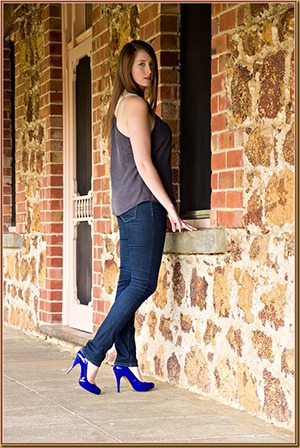DxO Used to Develop SCN Falls Farm Shoot (3) Pictures
A new comment today on the posting “SCN Falls Farm Shoot (3): Dreamy-Sexy, Sexy Dreamy” by smile_click asks if I took the pictures as RAW and if so, then what I used to process the RAW to JPGs.
The answer to the first question is “Yes”. Lately, probably over the last six months or so (maybe longer), I have been taking everything as RAW+JPG. This is a setting on the Pentax K-5 which means every picture is taken RAW but an in-camera processed ‘safety’ JPG is also saved to the memory card.

The RAWs for posting 1 and posting 2 were processed into working JPGs using the RAW processing module that comes as part of Adobe Photoshop Elements (v9).
For posting 3 I used a trial download of DxO Optics Pro v7 by Image Labs—usually just known as DxO. I had read a number of comments on DPreview in the Pentax SLR forum about DxO so I decided to download the trial version and see what I thought of it.
I have to admit I am very impressed with the RAW processing done by DxO. I am seriously thinking of buying a copy. People might ask why pay out $99 for a copy of some software when all it does is process RAW files to JPG and this can be done within Adobe Photoshop Elements.
Well DxO is not your average RAW processing software. It takes into account a lot of other little variables when processing the RAW, but the main thing about DxO is that it knows about lenses. It checks which lens you used to take the picture you are about to develop and what F-stop and lens length was used, then it applies some rules to the processing that it ‘knows’ really need to be done to get the best from the lens being used. These rules have all been worked out lens-by-lens by the people at Image Science and put into the DxO lens processing database.
You can disable DxO from applying what it knows about your lens to the RAW as it processes it, but based on my experience it does a pretty amazing job. Then on top of this you can go ahead and do your normal RAW processing adjustments (noise reduction, vibrancy, temperature, tint, shadow recovery, burnt highlight recovery, etc.,) just as you would in Lightroom or Photoshop Elements.
If I end up buying a copy of DxO I will probably do a posting about it and provide some more details.
For anyone interesting in checking out DxO the site is here. If you want to get a copy at $99 you need to buy it before the 24th December. After that it goes back to its ‘regular’ price of $169.

